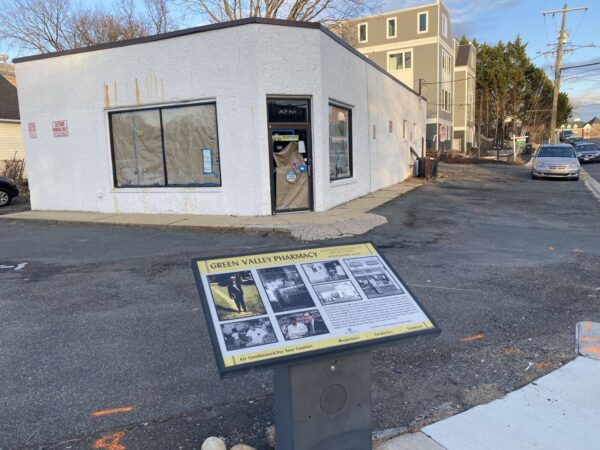
It appears that the new restaurant coming to the former Green Valley Pharmacy could finally be ready to open by this summer.
Over the last several months, the county has reviewed and approved a number of plans related to the proposed renovations at the historic building. Another sign of progress: recent meetings with the community that had in the past pushed back on some of those proposals.
Construction could begin within weeks on the property, which has sat mostly untouched for the better part of six years, we’re told.
The county, the building owner, the restaurant tenant, and the Green Valley Civic Association have all signaled to ARLnow that they are ready to move forward to redeveloping the local landmark into a kabob restaurant.
“We do still have concerns with parking, ingress, and egress,” Green Valley Civic Association president Portia Clark told ARLnow via email. “[But] the community is not holding up this project.”
The restaurant project was first reported in September 2021 and came with the blessing of Jessie Al-Amin, the daughter of former pharmacy owner Doc Muse.
Muse was a graduate of the Howard University School of Pharmacy and opened Green Valley Pharmacy in 1952 as Arlington’s only pharmacy and lunch counter to serve the county’s Black community during the Jim Crow era.
The business at 2415 Shirlington Road was designated by the county as a local historic landmark in 2013, with a historic marker placed there in 2014.
Al-Amin inherited the building from Muse when he died in 2017. The pharmacy at 2415 Shirlington Road closed shortly after his death.
In August 2019, Al-Amin made a deal with local business owner Nasir Ahmad for him to rent the building and open a new business. Ahmad owns restaurants in Sterling and Fredericksburg and told ARLnow he previously owned a fried chicken eatery in Green Valley close to twenty years ago, where John Robinson, Jr. Town Square is now.
Since it is protected as a local historic district, any proposed exterior alterations had to be approved by the Historical Affairs and Landmark Review Board’s (HALRB) design review process.
In October of last year, the HALRB approved proposed hardscaping and parking modifications. Last month, the board issued a Certificate of Appropriateness allowing for exterior alterations.
“For the time being, the HALRB process is complete, unless there are future changes needed to their approved certificates OR if additional exterior alterations are proposed (signage, outdoor seating, etc.),” Historic Preservation Program coordinator Cynthia Liccese-Torres told ARLnow.
Even if the HALRB needed to review external signage, Liccese-Torres said, the restaurant could still open without signage being finalized.
The only hang-up now, at least on the county side, is for the Dept. of Environmental Services (DES) to approve the building permit. A county spokesperson said that a review is currently taking place, though said that they could not provide a timeline for when it might be completed.
Ahmad told ARLnow he believes he’ll hear back from the county within the next few days, noting that even if plans needed to be altered that shouldn’t delay the project that much.
From there, construction would likely take three to four months. That could put an expected completion date sometime in the late spring or early summer.
As previously reported, the restaurant is set to serve chicken, rice, kabobs, burgers, and pizza. While “Halal Spot” was thought to be the restaurant’s name, Ahmad said they have yet to make a final decision on that.
Clark said that whatever the name might be, the community is ready for it to be redeveloped.
“They need to do something because the building is now just an eyesore,” she said. “The window coverings look awful.”
Trash and illegal parking have also become problems, locals tell ARLnow, which has added to the downtrodden look of the property.
But “slow and steady” progress seems to be happening and those involved are looking forward to finally opening a new community-serving business.
“I’ve always wanted to make sure [the redevelopment] represented my father’s legacy,” Al-Amin said. “It will be nice when it’s done.”
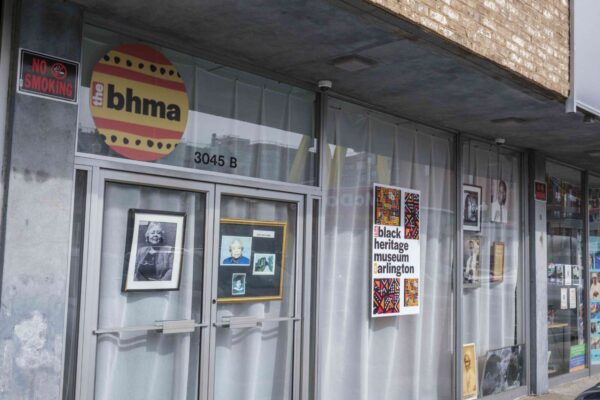
(Updated at 5:20 p.m.) It’s set to be a busy month at the Black Heritage Museum of Arlington as it continues to look for a permanent home.
The museum is participating in a number of Black History Month programs while preparing to put up new exhibits, museum director Scott Taylor told ARLnow.
This past weekend, the museum partnered with the Columbia Pike Partnership and the Embassy of Switzerland on a program focused on the importance of museums in the community.
On Sunday (Feb. 5), families and staff from Tuckahoe Elementary School visited the museum. Plus, Taylor monitored a panel last night for the local PBS station WETA discussing the production of last year’s documentary series “Making Black America.”
Coming up on Sunday, Feb. 19, the museum is again partnering with WETA as well as the Arlington Public Library for a screening of the documentary American Masters: Roberta Flack at the Arlington Cinema and Drafthouse on Columbia Pike.
Flack is known for several number-one hits including “Killing Me Softly” and grew up in Green Valley.
All of these events and programs have kept Taylor so busy that he hasn’t had a chance to put up any new exhibits, but that’s hopefully changing this week.
The museum is planning to set out a display featuring items from what was once Hoffman-Boston High School, Arlington’s only high school for Black students at a time when the county’s schools were segregated.
“We have some sixty-plus-year-old yearbooks that people see and feel and look at,” Taylor said.
There will also be a “few new things” from Fire Station 8, including several firemen hats and boots. Located in Halls Hill, it was Arlington’s only fire station staffed with Black firefighters. A state-of-the-art station is replacing the old one and is expected to be completed later this year.
Later this month, Taylor plans to put up an exhibit about Camp Casey featuring a gun from the era as well.
All of this comes as the museum continues its search for a permanent home. In September, it moved into a new space with the Columbia Pike Partnership on the first floor of the Ethiopian Community Development Council building at 3045B Columbia Pike.
While Taylor appreciates the temporary home, it is small and the museum is often unable to do everything it wants to do.
“Arlington needs this and, most people who come through, want [us] to expand,” he said. “I have things that I can’t even put up because we don’t have enough space.”
The museum is not close to finding its own home, Taylor said, noting money is the main obstacle.
“The rent in Arlington is just crazy. These new buildings want $10,000 a month,” he said.
At their grand re-opening in September, Taylor said he had a conversation with several County Board members about possibly moving into the building across the street if it ends up getting redeveloped by the county into a library.
But that remains only a possibility and somewhat far in the future.
The Black Heritage Museum is a “big asset” to the county, he said, one that he says needs to be cherished and given assistance to.
“This history is not being taught in schools. We bring voices to unsung heroes,” Taylor said. “This history belongs to Arlington.”
(Updated at 8:50 p.m.) A new historic marker has gone up at the 138-year-old Mount Salvation Baptist Cemetery, honoring the final resting place for a number of early Halls Hill leaders.
The county installed a historic marker in October at Mount Salvation Baptist Cemetery on N. Culpepper Street in the Halls Hill neighborhood, also known as High View Park. A brief unveiling ceremony was held in late November and attended by Board Chair Katie Cristol, local historian Charlie Clark, Black Heritage Museum president Scott Edwin Taylor, and others.
The marker reads:
“The Mt. Salvation Baptist Church trustees have maintained this cemetery since June 7, 1884 when they bought the property for $80. Reverend Cyrus Carter cultivated the congregation which began at the nearby home of Isabella Washington and Moses Pelham, Sr. The cemetery contains 89 known burials from 1916 to 1974, although earlier burials were likely.
This is the final resting place of many community leaders, including those who were formerly enslaved and their descendants. Members of this church provided stability and social support throughout segregation and served as a pillar of Arlington’s African American community. The cemetery became an Arlington Historic District in 2021.”
The cemetery was designated as a local historic district last year and the marker was approved by the county’s Historical Affairs and Landmark Review Board (HALRB) in April 2022.
“Being a Local Historic District (LHD) is not required to request a marker, but we thought this would be a wonderful opportunity to celebrate our newest LHD and provide a small glimpse into the history for those enjoying the neighborhood,” county historic preservation planner Serena Bolliger wrote ARLnow in an email.
The cemetery is the final resting place for at least nearly 90 early residents of Halls Hill, a fact known thanks to a ground-penetrating probing survey that was done in October 2019 with permission from the church. The probing also revealed potential grave markers and borders.
Buried at Mount Salvation are a number of influential Arlingtonians including Lucretia M. Lewis, Moses Pelham, and Annie and Robert Spriggs.
Scott Edwin Taylor, president of the Black Heritage Museum of Arlington, told ARLnow that what also makes Mount Salvation special is that it’s a great example of how traditional African American cemeteries were laid out and designed prior to the turn of the 20th century. Graves are often oriented east to west, with the head point westward. Burial plots tend to be shallow, no deeper than four feet, with plantings.
“Some anthropologists have suggested that marking graves with plants may have been rooted in the African belief in the living spirit,” reads the county’s report on the cemetery.
Some graves even have seashells.
“A lot of Black Americans, before the turn of the [20th] century, used seashells. It was… like asking angels to watch over the graves. A couple of the graves still have those seashells on there,” Taylor said.
Mount Salvation is one of two still-remaining, church-affiliated, historic African-American cemeteries in the Halls Hill neighborhood with the other being Calloway Cemetery on Langston Blvd.
It’s important to preserve these sites for generations to come, Taylor explained.
“The gentrification that’s going on in Arlington is moving at the speed of light,” Taylor said. “When we have landmarks like [this], we need to cherish them because it shows the real African-American experience.”
The following in-depth local reporting was supported by the ARLnow Press Club. Join today to support local journalism and to get an early look at what we’re planning to cover each day.
Marguarite Gooden, who is now in her 70s, remembers the day that her grandfather, “a sage man,” as she describes him, told her something that would forever alter her family’s course.
“Keep the land,” he said.
When she could afford it, she purchased her first childhood home, which her father built on her grandfather’s property. She then purchased her second, larger childhood home, which her father built across what’s now named Langston Blvd, then Lee Highway, when his wife became pregnant with twins.
“I own both properties and I have had the wherewithal to make sure they’re in trusts, and that my kids and grandkids cannot sell them,” Gooden tells ARLnow.
Gooden, who shared her anecdote during a county-facilitated conversation on the Missing Middle housing study, said in an interview with ARLnow that she is glad she could help her kids stay in Arlington if they wanted. She said she wants teachers, firefighters and nurses at the nearby Virginia Hospital Center to be able to afford to live here, too.
But all around her, new construction in Halls Hill is increasingly unaffordable — a new six-bedroom, single-family home with a modern design recently went for $1.7 million compared to a circa-1995, three-bedroom townhouse went for $825,000. Another new construction, single-family detached home on a dead-end street is listed for sale for $1.9 million.
There are still some relative bargains to be had in the neighborhood, like the five-bedroom rambler that sold for $735,000, but with each “fixer-upper” sale comes with the chance that another huge house from a local builder will replace it.
The pricier homes came at the expense of this historically Black community, Gooden said, as neighbors moved away for more space or cheaper property taxes and sold the property they inherited from their parents and grandparents.
“That completely changed that neighborhood,” Gooden said. “We don’t even know all our neighbors anymore. I used to know everybody.”
After all this upheaval, could the county’s plan to allow two- to eight-unit buildings in single-family neighborhoods create more attainable homeownership opportunities in Halls Hill? Could it prevent future displacement?
It’s unclear.
One prevailing attitude is “something is better than nothing,” but concerns remain that Missing Middle will increase development in Halls Hill without bringing down the price. Certain streets already allow low-density multifamily units, and given the recent sale of two duplexes for $1.2 million apiece, they’re worried new “middle housing” won’t be attainable and won’t stem the tide of gentrification.
“People who live here are worried Halls Hill will be targeted, not more north in Arlington, where options are needed,” said community leader Wilma Jones.
Some developers, meanwhile, are excited to tap into buyers who want homes that feed into Yorktown High School and still have lower property values, at least to compared to other North Arlington neighborhoods.
“There’s such little supply, people want to be anywhere in North Arlington,” said Charles Taylor, the head of acquisitions for Arlington-based Classic Cottages. “It’s pretty schools driven. A lot of times, we don’t granularly pick and choose ‘We want to be in this block or that block,’ it’s like, ‘Hey, this is a lot in North Arlington, it feeds into Yorktown, let’s go there.'”
A $10,000 state tourism grant will revamp how Arlington promotes its Black history to tourists.
Currently, the county’s tourism webpage outlines some of the important historic moments and existing landmarks. The landing page links to blog posts featuring Black businesses and artwork celebrating Arlington’s Black culture and history.
Travelers who want more can download a 68-page online tour guide last updated in 2016.
Arlington Convention and Visitors Service — the tourism division of Arlington Economic Development — wants to give the branding for these resources a facelift. And on Saturday, the Arlington County Board accepted a $10,000 grant from the Virginia Tourism Corporation to fund these upgrades.
“The Black Arlington experience is an incredibly representative one of American history and we are really excited to welcome in more tourists to learn about those landmarks and narratives,” Board Chair Katie Cristol said during the Saturday meeting.
The changes would make it easier to plan a trip engaging with Arlington’s Black history and support its Black-owned businesses.
“One idea is to create a customized map that highlights sites and experiences that honor and commemorate Arlington’s Black history across the County as well as showcase Black-owned business locations,” said ACVS director Emily Cassell. “We’re also considering adding suggested itineraries for visitors.”
The grant will pay for fresh photos, a professional video of major sights and digital assets for social media.
How Arlington celebrates its Black history has changed since the last reprinting of the tour guide.
Nauck — a historically Black neighborhood named for a Confederate soldier — was renamed Green Valley in 2020. The Nauck Town Square was dubbed the John Robinson Jr. Town Square and construction there on a new plaza and sculpture wrapped up this spring.
Last summer, Lee Highway was renamed Langston Blvd and Arlington Public Schools unveiled panels at Dorothy Hamm Middle School honoring the four students who integrated the building — formerly Stratford Junior High School — six decades ago.
On Friday, the Black Heritage Museum celebrated its grand reopening in a new space at 3045B Columbia Pike.
Eventually, visitors will be able to see more historical reminders of Arlington’s Jim Crow era. The new Fire Station No. 8 (4845 Langston Blvd) will pay tribute to the Hall’s Hill Volunteer Fire Department, which served the historically Black neighborhood, and the forthcoming restaurant in the former Green Valley Pharmacy space will pay homage to the only lunch counter and pharmacy that served Black people during segregation.
Information like this is expected to migrate to a new tourism website that will go live next year.
“We are well into plans for a new website launching in 2023, and are actively working on improved and expanded tourism content across the board,” Cassell said. “We are very pleased that this new [funding] will help us enhance visitor experiences and better tell the story of Arlington’s African American heritage. We’re also thrilled with today’s ribbon cutting at The Black Heritage Museum of Arlington and look forward to our continued partnership.”
The grant will facilitate collaboration with other groups, too, including Arlington’s business improvement districts, neighborhood groups, libraries, the county’s Historic Preservation Program, Walk Arlington and Bike Arlington, according to the county report.
ACVS applied for the grant early this year as part of an effort to conduct strategic tourism planning as travel recovers from the pandemic, according to a county report. From February through May, ACVS heard from nearly 40 “local hospitality stakeholders” on ideas they thought could boost local tourism.
“Of numerous ideas considered, participants expressed enthusiasm for promoting visitor sites and experiences that showcase Arlington’s African American heritage,” the report said.
Other ideas for improving tourism, discussed in the report, include a more up-to-date calendar of events, more live music venues, and water taxi routes to Reagan National Airport, the Pentagon and Rosslyn.
The Black Heritage Museum of Arlington and the Columbia Pike Partnership are nearly ready to open the doors to their new home.
The two Pike-centric organizations will host a joint grand opening celebration on Sept. 16 from 4- 6 p.m., on the first floor of the Ethiopian Community Development Council building at 3045B Columbia Pike. Local officials are expected to attend and the public is welcome to attend with an RSVP.
“The Black Heritage Museum of Arlington is excited about the grand re-opening of our museum in a new space!” the museum’s president Scott Taylor said in a statement. “We are so thankful to so many of you, who have been with us every step of the way so that this day would finally come again for us to display information and be a voice to many unsung Arlington heroes who have certainly a hand in making Arlington the great county/city it is today.”
We reported in May that the museum and the Columbia Pike Partnership (CPP) had found a new home a few blocks from their former one at 2611 Columbia Pike. Both were forced to vacate — along with all of the businesses at the Fillmore Gardens Shopping Center — due to the impending demolition and redevelopment of the shopping center.
It took about four months to settle into the space, CPP’s deputy director Amy McWilliams told ARLnow, but now they are ready to start welcoming the public. Their new home was originally intended as retail, not an office space, but with a majority of employees still working from home often the reconfiguration isn’t a big deal, said McWilliams.
Part of the office will be taken up by a display of photos from the Columbia Pike Documentary Project.
The Black Heritage Museum will be taking up a large chunk of space for its displays, exhibits, and artifacts. Museum president Scott Taylor said this allows the museum to display a few new artifacts and a couple of newer displays, including vintage items from an old drug store as well as photos of Arlington-raised singer Roberta Flack.
“A new space and change is always good,” Taylor wrote ARLnow in an email. “We still have some of this same items that we’ve always had in which is okay because there are still a lot of people who have not experienced us yet.”
Taylor told ARLnow in May that the museum was still hoping for its own space. With the county acquiring 3108 Columbia Pike, there remains a possibility the museum could go back to the building it occupied several years ago.
For now, the museum is once again sharing space with CPP and taking advantage of what they do have.
“Unfortunately we still don’t have as much space as we would like to have but we are making the best of what we do have and I can’t wait for everyone to see!” said Taylor.
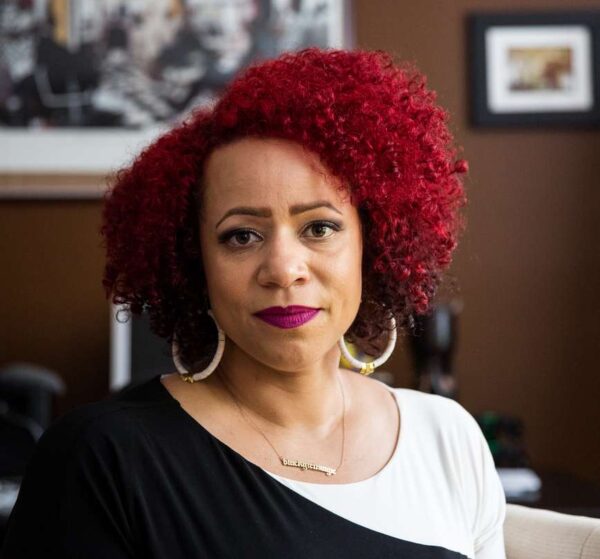
(Updated at 10:50 a.m.) Arlington Public Library is hosting Pulitzer Prize-winning “1619 Project” author Nikole Hannah-Jones as part of “Banned Books Week” next month.
The journalist and Howard University faculty member who led the 2019 New York Times project will talk about her book and “the freedom to read.” The event is set to take place on Tuesday, Sept. 20 at 7 p.m. in the Washington-Liberty High School auditorium.
“While this event is taking place at Washington-Liberty High School, Arlington Public Schools is not involved in the planning or hosting of this event,” notes the event page on the library website.
The event is “first-come, first-served until capacity is reached,” the page also notes. For those who can’t attend in person, the event will be live-streamed.
The “1619 Project” is an effort to better explain and contextualize slavery’s legacy, as well as Black Americans’ contributions, within the center of America’s history. It’s named as such after the date that the first enslaved African peoples arrived in Virginia.
The event at W-L is part of the nationwide “Banned Books Week,” an annual celebration by libraries and bookstores that highlights the value of “free and open access to information.”
The county’s library director Diane Kresh explained in a 2017 blog post that the reason Arlington Public Libraries celebrates Banned Books Week is that books are expressions of freedom.
“Books are change agents. They challenge our beliefs and biases. They expose us to different experiences and cultures. They help us learn to think for ourselves and not follow the crowd or cult of public opinion,” Kresh wrote.
The lecture is also part of the larger “Arlington Reads” event series.
The “1619 Project” has been both celebrated for its groundbreaking exploration of the topic and criticized for what some say are a series of historical inaccuracies and an emphasis on the significance of enslaved peoples in America’s history over other well-known dates, people, and events. It also sparked political controversy, with conservative members of Congress calling for measures to prevent it from being taught in K-12 schools.
A towering remembrance of the former Black community of Queen City is slated to be included in an Amazon-funded park next to HQ2.
Arlington’s Historical Affairs and Landmark Review Board (HALRB) is set to review the proposed public art installation, from D.C. artist Nekisha Durrett, at its meeting tonight.
A presentation prepared for the meeting shows a 30 foot tall brick chimney stack, with the words “Queen City” written in brick, along the footpaths of the new Met Park in Pentagon City. The park is currently under construction after the County Board approved a $14 million, Amazon-funded renovation project two years ago.
The revamped park is expected to re-open at some point next year.
The proposed red brick structure, harkening back to the area’s past as a hub for brick production, will also include a decorative interior that park-goers will be able to freely enter.
Made with reclaimed bricks and illuminated by LED uplighting, the tower will seek to carry forward the legacy of the Black enclaves of Freedman’s Village and, more specifically, Queen City — two of several that dotted Arlington a century or more ago.
Freedman’s Village, founded on the former estate of Confederate Gen. Robert E. Lee during the Civil War, was closed by the federal government in 1900 and became part of Arlington National Cemetery. Queen City was founded nearby in response to the closure of Freedman’s Village.
But Queen City, too, would eventually be razed by the federal government — in 1942, to make way for the freeway network built around the newly-constructed Pentagon.
From the doctoral dissertation of Lindsey Bestebreurtje, Ph.D., a curator in the National Museum of African American History and Culture:
Together with the adjacent community of East Arlington, Queen City was located in south-eastern Arlington on flat land, prone to flooding from the nearby Potomac River, near several factories and along the Washington, Alexandria, and Mt. Vernon trolley line. Queen City was built around the Mt. Olive Baptist Church which had roots in Freedman’s Village. Saving one-fourth of an acre for the church, the remaining land was parceled into forty lots to be sold to church members leaving the Village. With small plots of 20 feet by 92 feet, this subdivision transformed the former farm land into a more dense and suburban environment. Many of the homes constructed by former residents of Freedman’s Village at this time were reminiscent of the simple clap-board houses they called home in the Village, making housing type another product of the Village’s diaspora.
By 1942 more than 200 working class families lived in modest but well-kept frame houses. Just as was the case in Freedman’s Village, where residents saw a thriving community, outsiders saw the black neighborhood as a ghetto. In January of 1942 construction began for the Pentagon’s road networks in the path of the communities. Properties were seized through [eminent] domain laws with modest payments. With this loss some community members left the area entirely, while other residents and institutions relocated to Arlington’s remaining black communities of Hall’s Hill, Johnson’s Hill, or Green Valley.
The dissertation notes that the destruction of the Queen City community was personally approved by the president at the time.
Editor’s Note: The following article first appeared in the ARLnow Press Club weekend newsletter. Thank you to Press Club members for helping to fund our in-depth local features.
The phone rings on a stormy afternoon in Halls Hill and 92-year-old Hartman Reed swivels in his chair to answer it.
“Hello, Crown Cab,” he says.
Reed first started working for the long-running cab company back in 1958 as one of the first Black cab drivers in Arlington. He picked up customers in a Chevy. Today, more than six decades later, he owns the company, making it one of two Black-owned cab companies in Arlington.
Reed had a second notable job as well. He was also a firefighter at famed Fire Station No. 8 in Halls Hill. It’s believed he was one of the first paid Black firefighters south of the Mason-Dixon line.
“As I grow older, I now know how important it was to be first at things,” Reed tells ARLnow. “I now know what we did made it possible for others behind us to advance.”
For decades, Halls Hill had only a volunteer firefighter department. Even when the county started allocating money to other neighborhoods to pay their first responders in 1940, Arlington declined to do the same for Halls Hill. What’s more, fire companies in surrounding neighborhoods would not come into Halls Hill to provide help.
Finally, in the early 1950s, the county provided money to Halls Hill to hire professional firefighters. Reed, straight out of the Navy, was one of the first hired, starting on the job in 1952 at Fire Station No. 8.
He remains extremely proud of not just the work he and his fellow Halls Hill firefighters did, but the reputation they earned in the community.
“Just because we were Black, we were looked at as people who didn’t have the courage to go in and fight fires,” he says. “We had to prove ourselves. In most cases, I’d say we were outstanding as a company because we wanted to prove that we were as good or better than any other company.”

Fire fighting wasn’t the only community need where Jim Crow reared its ugly head in Arlington in the mid-20th century. In an era there were fewer people had cars, cabs were neighborhood necessities. However, many white-owned Arlington companies would not pick up customers in Arlington’s Black communities like Johnson’s Hill, Halls Hill, and Green Valley.
So, two companies — Friendly Cab Company and Crown Cab — were founded specifically to service those neighborhoods. A number of the cabbies were firemen, including Reed.
In 1958, fellow Fire Station No. 8 firefighter Buster Moten started Crown Cab and hired Reed as his first driver. It’s believed he was one of the first Black cab drivers in Arlington.
For about 16 years, Reed was both a firefighter and a cab driver but he says the two jobs went hand-in-hand. For one, being a cab driver helped him “learn the territory.”
“You have to know where places are when a [fire] call comes in. You can’t be hunting around,” he says. “As a cab driver, you got to know the county a lot better.”
Cabs were also there for emergencies, like hospital visits, particularly since Arlington’s Black residents were often not allowed to go to the hospital closest by.
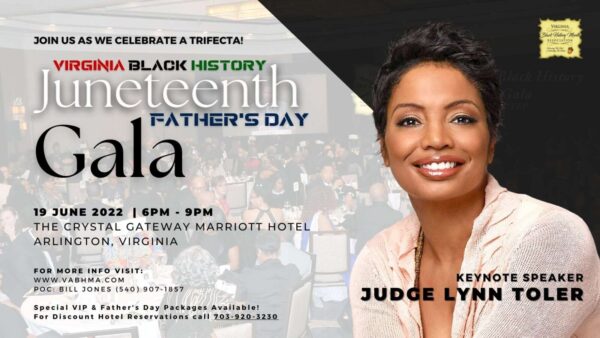
The Virginia Black History Month Association plans to host its first event with an in-person component since the pandemic began in Crystal City.
The group’s annual gala, normally held in February, was pushed to June after the area recorded a high number of Covid cases due to the Omicron variant.
“We decided to move it to Juneteenth because that is the second African American-recognized holiday,” VaBHMA President Bill Jones said. “So we moved it to June 19 to celebrate Black history and Juneteenth, and then we got a bonus when we realized that June 19 is also Father’s Day.”
The event, which has been held since 2000, is scheduled to take place on Saturday, June 18 and Sunday, June 19 at the Crystal Gateway Marriott Hotel (1700 Richmond Highway).
“This is the first time we’ve had a face-to-face event since 2020,” Jones said. “We came back into the ballroom again in 2022.”
Attendees can choose to attend in person inside the ballroom or watch the event from their hotel rooms, according to the gala’s website. There will only be 500 tickets available because of the pandemic, Jones said.
The keynote speaker for the gala is Lynn Toler, former judge on the TV show “Divorce Court.” The master of ceremony is Julius D. Spain Sr., the president of the Arlington branch of the NAACP.
The theme for the gala this year is Black Health and Wellness, in accordance with the national theme for Black History Month in 2022. The theme aims to acknowledge the legacy of Black scholars and medical practitioners in Western medicine, as well as the “activities, rituals and initiatives that Black communities have done to be well,” like building medical schools and community clinics, according to the gala’s website.
The guests of honor and keynote speaker were chosen for their connections to the gala’s theme, Jones said. A seminar on health and wellness in African American communities is slated for the first day.
A determination on when the event will be held next year will be made in November, Jones said.
“There’s a chance that we could also host the 2023 event in June if the [Covid] number’s going to be high,” he said.
Apart from the gala, the association is also planning a health fair later this year to promote important checkups to underserved communities, Jones said. He mentioned field trips to African American historical sites as other possible events the association may hold, as well.
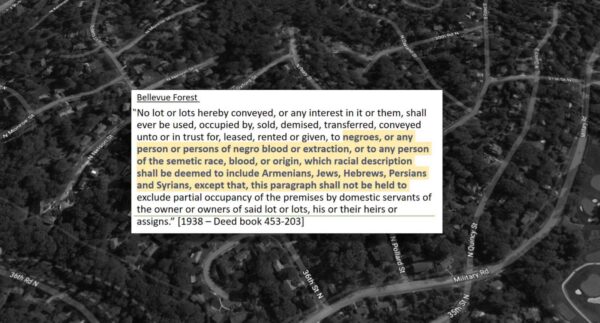
A sociology professor at Marymount University and a former housing lawyer are poring over century-old property records to locate Arlington’s segregated neighborhoods.
It’s a time-consuming process, but the goal is to map Arlington’s “history of exclusion,” says professor Janine DeWitt.
“Our research is to take a look very closely at a granular level — lot by lot, parcel by parcel — and map the racially restrictive covenants that were in Arlington,” she said during a discussion hosted by the Arlington Historical Society last week. “We want to know the Arlington we’re in right now and how much of that was exclusionary.”
And DeWitt says she and her research partner, Kristin Neun, will not stop “until we find every last one of them and not before.”
This research effort is taking shape while the county grapples with its history of racist zoning policies through the Missing Middle Housing Study. Housing advocates who welcome the study, however, say it’s not enough to integrate neighborhoods that are still restricted as a result of the 20th-century practices DeWitt and Neun are researching.
Until the Fair Housing Act of 1968 made racially restrictive covenants illegal and unenforceable, these clauses excluded potential buyers based on their race, ethnicity or religion. Such deeds governed Arlington’s housing market and mostly targeted Black Arlingtonians, while others included Middle Eastern immigrants, Jewish people and Armenians.
These covenants, codified by developers in conjunction with county government, applied to all future property transfers unless a property owner removed them. Only a handful did so after the U.S. Supreme Court ruled these covenants were unconstitutional in 1948.
DeWitt says she and Neun would have started their research at the Arlington County courthouse, leafing through physical pre-1951 property records, but due to Covid they conducted research every way they could until the county wrapped up a two-year project to digitize land records documents.
Even with the digital copies, the records still need to be read and searched by hand.
“Property records are tremendously inconsistent,” DeWitt said. “It’s incredibly difficult to parse this. It requires a high-touch approach.”
Once she and Neun find a deed with a restrictive clause, they match it with a current address and plug it into a map.
So far, they have mapped out covenants on properties in the Arlington Forest and Bellevue Forest neighborhoods. They found covenants for the historic subdivisions of Country Club View, Flower Gardens, Jackson Terrace and Woodlawn Village, which are now part of the Donaldson Run, Penrose, Tara-Leeway Heights and Waycroft-Woodlawn neighborhoods, respectively.
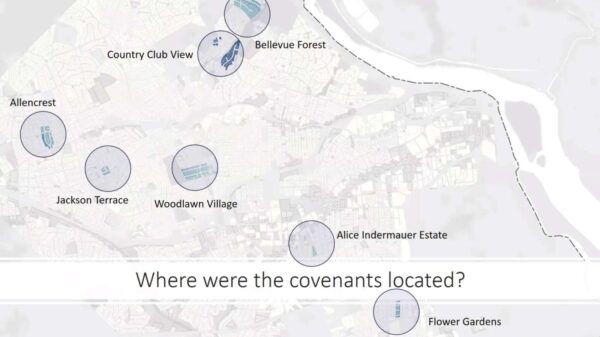
So far, DeWitt and Neun have observed these restrictions date from 1910 — and possibly earlier — all the way until the mid-1950s.
And some deeds were euphemistic, prohibiting occupancy “except for the race for which it is intended,” or prohibiting stables, pig pens, temporary dwellings and high fences.
“It’s amazing how you can vary restricting somebody,” said Neun, a former housing lawyer turned community educator.
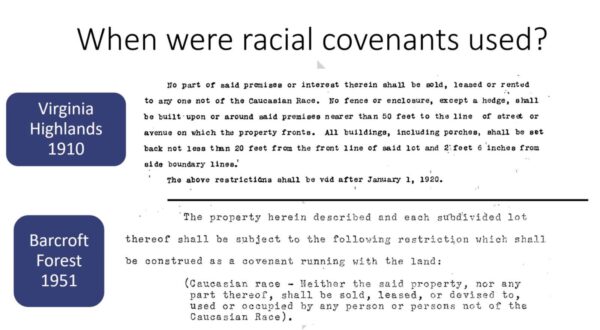
Racial exclusion in Arlington tracks with regulations at the state and federal level, Neun said.
When Democrats took control of Virginia state politics in the early 1900s, they championed “homogeneity” — the idea that “homogeneous populations do better, live better, are happier and less risky,” Neun said.

